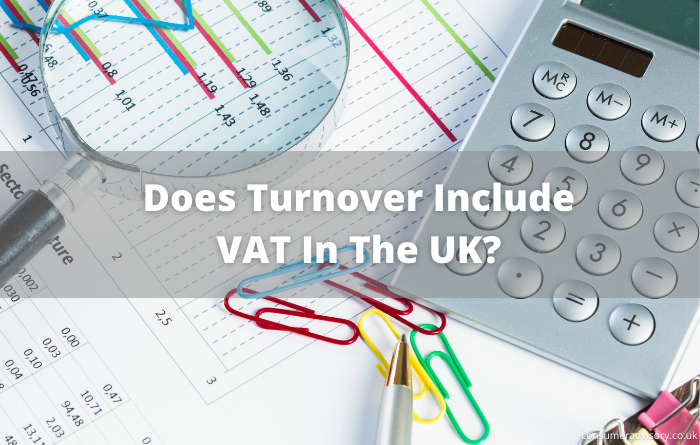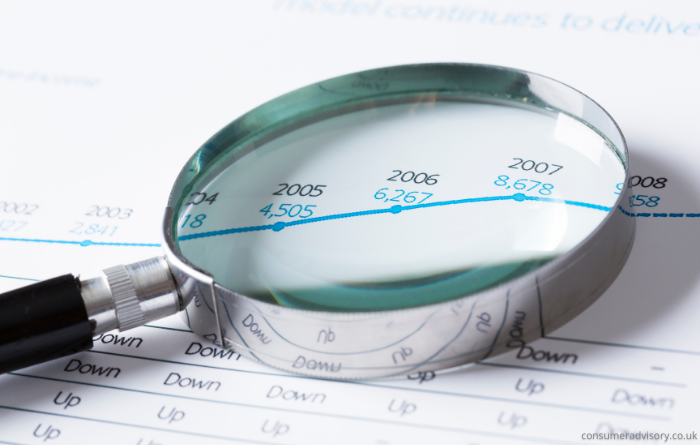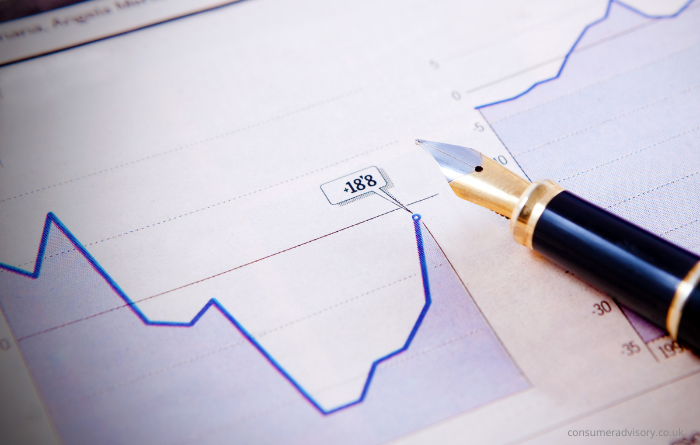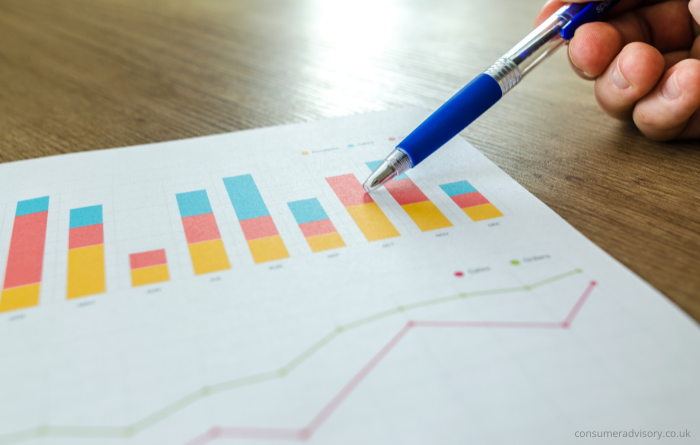
So, does turnover include VAT? The answer to this question is no, turnover does not include VAT. But why is turnover calculated in this way and what is the metric actually used for? Read on to discover everything there is to know about turnover, including why VAT is not included in your business turnover and how to calculate this important business metric.
When you’re running a business, turnover is an important metric to keep track of. You’ll need to include your business turnover whenever you complete a tax return, so it’s vital that you fully understand what it is and how to calculate it.
The truth is, the answer to this question may surprise you. In this article, we’ll explain exactly what business turnover is and what it includes, giving your business a helping hand when it comes to completing your tax return accurately.
Do You Need To Include VAT In Your Business Turnover?
If you’re in the middle of completing your first tax return, you might be stuck wondering whether you need to include VAT in your business turnover. This is a common question that many business owners have, especially when they complete their first-ever tax return.
What Is VAT?
You’ve probably heard of VAT or Value Added Tax. You may also have come across this acronym when completing your business taxes for the first time!
VAT is a form of consumption tax that’s included in most goods and services you buy throughout the UK. While there are some exceptions to what does include VAT, it is applied at every stage of production, until the products reach the end consumer.
The VAT rate is currently set at 20% in the UK, with around 50% of all products that are purchased by UK households subject to this level of VAT. The price that you’ll see on shop shelves will already include the relevant rate of VAT, before being displayed for sale. Some items like food or children’s clothing can be exempt from charges if they’re not intended for resale purposes- so keep your eyes peeled!
Who Pays VAT?
One of the most common questions business owners have is ‘who pays VAT?’ This means what party will be liable for tax on a sale.
Every business in the UK that has a turnover that exceeds £85,000 during any tax year must register for VAT under UK law. You’ll also need to register if you expect your turnover to reach £85,000 within the tax year.
Companies are also able to register voluntarily for VAT without earning this amount and it doesn’t matter if they don’t make profit – their prices will still include VAT automatically!
The level of VAT in the UK is set to remain at 20% until March 2024, when it may be reviewed and potentially altered. However, it’s important to note that this VAT is not paid by company selling the goods – it is instead billed to the customer, who pays the VAT bill to the retailer. This is then passed on to HMRC by the company. That is why VAT is excluded from business turnover – as the money is never the legal property of the business.

What Is Business Turnover?
So, let’s take a look at exactly what is business turnover?
Business turnover is the total value of everything that a business has sold. This includes both goods and services which have been bought or provided by the company in question. You might also hear of turnover being called the ‘top line’ or ‘sales’.
You can think of turnover as the amount that is billed to your customers, excluding any VAT. So, your turnover will include everything that your customer pays, including any shipping fees or expenses. The only thing that you can deduct from the bill is any VAT that has been paid.
What Is Included In Turnover?
So, you need to calculate your business turnover. But what do you need to include in this figure, and what is excluded?
The turnover of a business includes all business income, except for VAT. So, you’ll need to include things like sales, shipping costs and any interest that you charge to your customers. Basically, any money that comes into your business needs to be included in your business turnover.
The only thing that you are able to exclude from your turnover is any VAT that you charge to your customers. This means that you shouldn’t take any expenses off your turnover figure: VAT is the only deduction that should be made.
How Do You Calculate The Turnover Of Your Business?
One of the first steps to completing your tax return is knowing your turnover for a specific period. This can be complicated if you’re not familiar with what business turnover actually means, but we’re here to make it simple.
If you use accounting software, you’ll find that most types have an in-built function for calculating business turnover. This makes it fast and easy to view your figures for business turnover, without needing to perform manual calculations.
However, if you prefer to work out your business turnover manually, it’s easy to do using Microsoft Excel. To calculate business turnover in Microsoft Excel, you can simply add up all of your sales. However, you’ll need to remember to exclude any VAT from the total.
This becomes slightly more complicated in the UK, where businesses are able to choose between two different accounting methods: traditional accounting and simplified cash basis accounting. This is because the method of accounting that is chosen will affect how turnover is calculated.
If your business uses the traditional method of accounting, you will need to include every sale that your business has made within the financial year within your business turnover. This applies whether or not the invoice has been paid. So, you could end up including money in your turnover that you have not yet received.
If your business uses the simplified cash basis accounting method, your business turnover will only include the income that has actually been paid into your bank account during the financial year. So, simplified cash basis accounting will exclude any invoices that have not yet been paid, even if it was due during the specified period.

Why Is Turnover Important?
Business turnover is an important metric that you need to be aware of. Not only will you need to include this figure in your annual tax return, but it’s also a vital metric to track the progress and performance of your business.
For example, understanding your turnover can help you to see exactly how much money your business is earning. This will not only give you a better sense as to whether or not it’s profitable, but can also help with forecasting future performance and planning for additional expenses that may arise throughout the year.
Additionally, your business turnover provides an overall picture of what is selling well within your company during any given time frame. This will help you to see where most of your focus should be when it comes down to growing sales in order to maximise profits in the next financial year.
Are Expenses Included In Turnover?
Many business owners wonder whether they can deduct expenses from their business turnover. After all, for some businesses, a large proportion of their income is used for expenses, so it’s easy to assume that they would need to account for these in their turnover.
It may surprise you to learn that your business turnover does not account for expenses. This means that you should not take anything away from your business turnover to allow for the expenses of the business.
The only thing that you should take away from your business income to discover your turnover is VAT payments. This is because the money given to your business for VAT is never the legal property of your business. You are simply holding onto it until it is paid to HMRC.
Your turnover includes all income that your business collects, including sales and shipping costs, with only VAT payments deducted from the total figure.
How To Keep Track Of Business Turnover
The best way to track your business turnover is by using a double entry bookkeeping system. This will allow you not only document all of the financial transactions taking place within your company, but also give yourself a better picture as to what’s going on behind the scenes too.
As well as this, if you want a fool-proof method for tracking and recording how much money should be included in each calculation when it comes down to calculating what is turnover then we recommend that every invoice includes either an asterisk or footnote which states whether VAT applies (in case there’s any confusion). Doing so makes sure that nothing gets lost in translation due to incorrect calculations at tax time.
You should then create monthly and quarterly reports of your business turnover, as well as graphs that show monthly turnover over time. Most accounting software will have a function built in to do this automatically, so that you can keep track of your business turnover and use it to monitor the performance of your business over time.

Turnover Vs Profit: What’s The Difference?
Turnover and profit may sound like two very similar concepts. However, it’s important to understand that turnover and profit are two very different ways of viewing your business income. Each of these has its own uses, and comparing the two can be a very valuable source of information when it comes to analysing the performance of your business.
Turnover is the total sum of money that has been paid into your business during a given time frame. This includes all sales, minus any VAT payments. You might also hear turnover referred to as the net sales figure.
Profit is the difference between your business income and your business expenses. In other words, it’s the money left over after all of the bills have been paid. However, it gets a bit more complicated when you realise that there are actually two types of profit that you need to be aware of: gross profit and net profit.
Gross profit, sometimes called the sales margin, is the total income of the business, minus the cost of providing the goods or services. Net profit, on the other hand, allows all business expenses to be deducted.
The key difference between profit and turnover is that profit is the amount of money left after the bills have been paid, whereas turnover is simply the total income of the business. Both of these measures are equally important to track. Don’t forget – a business could have a turnover in the millions, without making a profit.
Related Questions
How Much Do You Have To Turnover To Be VAT Registered?
The current threshold for VAT registration is set at £85,000 per year. This means that if your business turnover exceeds £85,000 per year, you will need to register to pay VAT. Remember, turnover includes all of your business income and if you are not yet VAT-registered, you will not make any deductions from your total income to calculate your turnover. Alternatively, you may choose to register for VAT voluntarily, if it would be beneficial to your business – there is no minimum turnover threshold to become VAT-registered voluntarily.
Is Turnover Net Or Gross?
It can be difficult to understand business turnover if you haven’t calculated this figure before. However, once you begin to understand how turnover works, the calculation becomes simple. Turnover is the gross amount of income that your business receives, less any VAT.
In Summary
Business turnover is an important metric when it comes to measuring the performance of your business and identifying improvements to increase your profitability. This figure is not difficult to calculate once you understand what it includes and what it doesn’t.
In this article, we’ve answered the question ‘does turnover include VAT’, as well as exploring why turnover is so important for businesses in the UK. Not only will you need this measure to be able to complete your tax return, but it’s also a vital measure of the health of your business.
